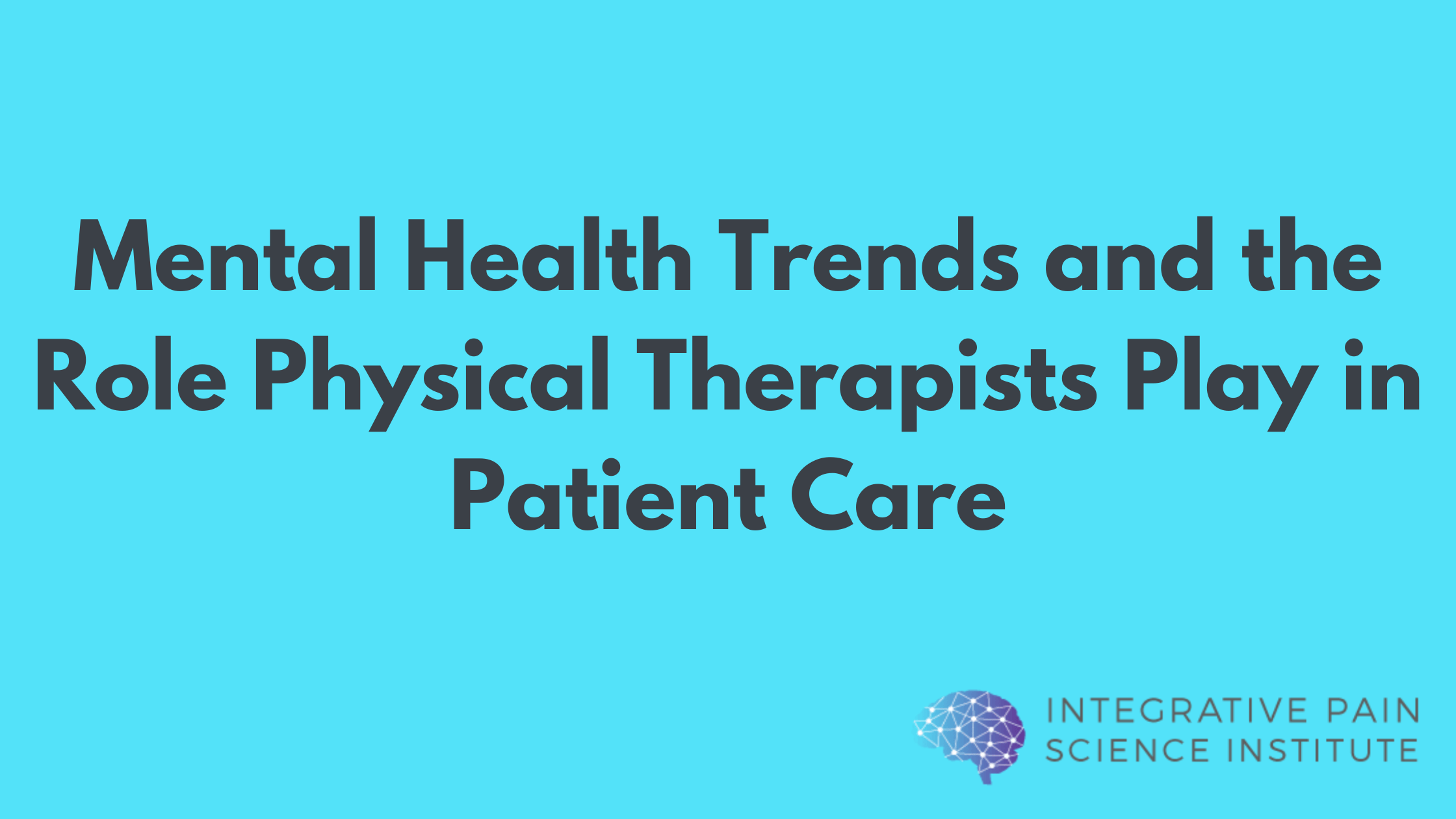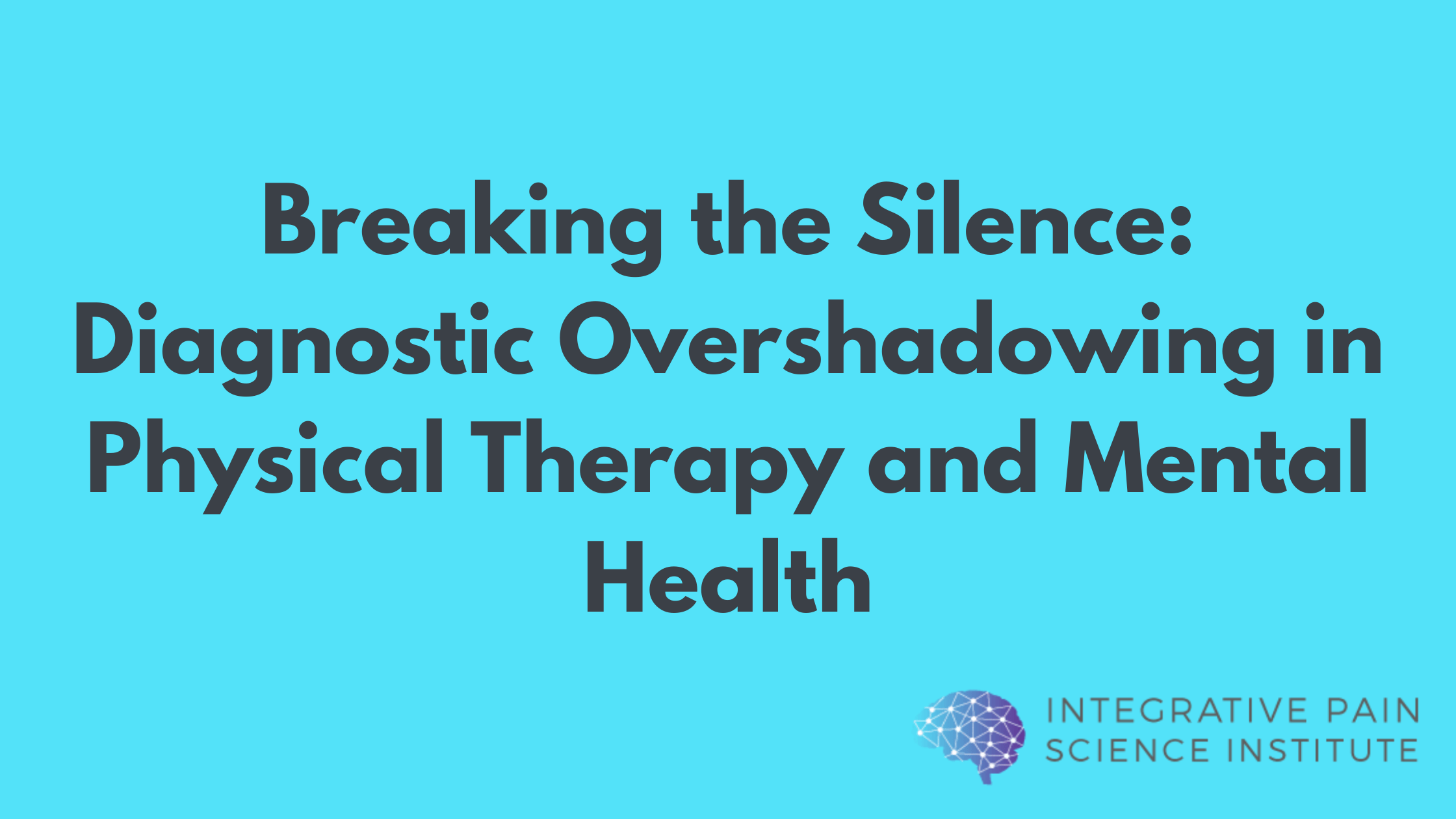RLow back pain is one of the greatest contributors to disability worldwide. Additionally, the complete lack of any of classifiable pathoanatomical changes is the norm for up to 85% of chronic low back pain cases. Recent studies have investigated the potential relationship between central sensitization and chronic pain disorders, including chronic low back pain, revealing a number of clinical questions:
- What is central sensitization and what are its causes?
- How can central sensitization be clinically identified?
- Can central sensitization be contributing to a sub-group of patients with chronic low back pain?
What is Central Sensitization?
Central sensitization is commonly defined as increased pain sensitivity due to significantly increased neural signaling within the central nervous system. Central sensitization has been recognized as a potential pathophysiological mechanism responsible for a group of chronic pain disorders, including fibromyalgia, temporomandibular joint dysfunction, and myofascial pain syndrome. These associated disorders are similar in a multitude of ways. Specifically, they involve the symptom of persistent pain for at least 3 months or occurring periodically within a 6-month period, in absence of discernible mechanical causes.
Central sensitization is considered to be a separate category of pain that is distinct from pain that may be due to noxious mechanical stimuli or peripheral neuropathy. Central sensitization is usually defined by a disproportionate and non-segmental pain distribution, implying that the severity of pain and the perceived disability are inconsistent with the nature and extent of the injury.
Central sensitization may be the cause of your low back pain. Share on X
What Causes Central Sensitization?

Central sensitization pain results from dysfunctional neural signaling in one or more components of the central nervous system, leading to a vastly increased level of pain sensitivity. The mechanisms behind central sensitization are numerous and complex. Exposure to a painful stimulus heightens the responsiveness of the peripheral nervous system as the perceived risk of further damage is high. This is termed, “peripheral sensitization.” Prolonged exposure to a painful stimulus leads to an overall change in central nervous system perception and signaling, whereby non-painful stimuli are coopted into pain-sensitive neural pathways. It is by this process that pain hypersensitivity in healthy tissue is no longer associated with tangible, noxious stimuli but rather central neuronal changes.
Essentially, enhanced synaptic efficiency, loss of spinal cord inhibitory interneurons, facilitation of ascending pain mechanisms, and altered cortical processing of painful inputs combine to yield the upregulation of painful stimuli perception. The end result is that noxious stimuli, which usually cause pain, may become exaggerated, while non-painful stimuli may be centrally perceived through nociceptive pathways and thus experienced as painful to the patient.
Central Sensitization in Chronic Low Back Pain
Identifying central sensitization in patients with chronic low back pain is often exceedingly difficult. This is due to the fact that the complete absence of specific, physical injury, a hallmark of central sensitization, is actually very common in chronic low back pain. Consequently, the degree of spinal cord damage as observed by x-ray, MRI, or CT is not associated with the presence or severity of pain, and imaging, therefore, cannot guide treatment. Many musculoskeletal disorders are able to trigger central sensitization, and chronic low back pain is no exception.
Multiple studies examining patients with chronic low back pain have demonstrated physiologic alterations within the central nervous system. For example, imaging studies of chronic low back pain have revealed neuroplastic changes in the brain, showing increased cortical activity and an expansion of the lower back’s cortical sensory area. Altered pain processing has also been demonstrated in patients with chronic low back pain, as these patients experience more pain and display increased neural activity in pain-related cortical areas when compared to healthy control subjects who were exposed to an equal level of pressure. Additionally, patients with chronic low back pain experience widespread hyperalgesia where they experience a decreased pressure pain threshold, higher pain response, longer duration of pain, and larger areas of pain referral following the exposure to a painful stimulus.
The consistent exposure to intense pain over a prolonged period of time, combined with the physiologic alterations within the central nervous system, is the primary contributing factor towards the advent of abnormal pain processing. This abnormal neural signaling gives way to central sensitization.
Identifying Central Sensitization in Chronic Low Back Pain

Initial evaluation of patients with chronic low back pain typically attempts to place these individuals into one of the following three categories: spinal pain with serious or systemic spinal pathology, spinal pain with neurological deficits, and nonspecific spinal pain. As previously mentioned, a nonspecific etiology of chronic low back pain is most common, accounting for up to 85% of all cases.
It should be noted that not all chronic low back pain patients have central sensitization. However, if present, central sensitization may overshadow the clinical picture, interfering with both the response to various treatments and the timeline of recovery. It is therefore vitally important for clinicians to be able to diagnose central sensitization in patients with chronic low back pain presenting for treatment.
A clinical method was recently developed for the differential diagnosis between predominant nociceptive pain and central sensitization in chronic low back pain based on three diagnostic criteria:
- Discrepancy between the experience of pain and the extent of injury
- Anatomically illogical pain distribution (i.e. pain areas with a non-segmental distribution) and the presence of allodynia and hyperalgesia
- Hypersensitivity of the senses not related to the musculoskeletal system
The most important signs indicating central sensitization are the presence of tactile allodynia (a painful response to a normally non-painful stimulus) and hyperalgesia (an extreme, exaggerated reaction to a non-painful stimulus) unrelated to the primary site of pain.
Treating Central Sensitization
central sensitization indicates signaling in the nervous system is dysfunctional, producing pain & fatigue without the presence of physical tissue damage Share on X
So the astute clinician suspects central sensitization in a patient with chronic low back pain, but one final question persists: now what? The presence of central sensitization indicates that signaling within the central nervous system is dysfunctional, producing pain and fatigue without the presence of physical tissue damage. Central sensitization is not a psychological disorder, but rather a physical disorder of the central nervous system. Therefore, the brain and spinal cord are critical targets for treatment. There is plenty of evidence supporting the use of medications to treat central sensitization, their review is beyond the scope of this post. Therefore, here are some non-pharmacological strategies you might use:
- Explain to the patient the mechanism by which central sensitization occurs. This enables your patient to understand the mystery surrounding their chronic pain, thus improving stress management and self-efficacy.
- Use a “time-contingent” approach to activity, whereby everyday activities are broken down into smaller, more manageable blocks. This approach focuses on how much was accomplished in a given timeframe (think: “How far could you walk the dog in 30 minutes this week?”). This procedure stands in stark contrast to a “pain-contingent” approach, which can actually perpetuate the presence of central sensitization (think: “How far could you walk the dog before your back began to hurt?”). The aim is to reframe the patient’s mindset from pain-focused with function limited to function-focused with pain respected.
- Exercise! A supervised training program has beneficial effects on physical capacity and central sensitization symptoms. The exercise regimen should begin gradually with low load and low impact activities, and while pain should be acknowledged, it’s presence should not drive the direction of the program. Consider guiding your patient towards aerobic exercise, strength training, and aquatics.
Take Home Points
The chronic pain experienced by patients with chronic low back pain, often in the absence of physical injury, puts these patients at greater risk for central sensitization. When evaluating patients with chronic low back pain, remember the three diagnostic criteria used for the differential diagnosis between primary nociceptive pain and central sensitization in chronic low back pain, and that the presence of allodynia and hyperalgesia are the principal signs.
Chronic low back pain often exists even in the absence of physical injury! Share on X
Addressing the brain and central nervous system is a vital part of the treatment plan for patients with chronic pain. Using the “time-contingent” approach to activity, combined with regular exercise and other techniques for desensitization, provides the best framework for helping patients along their individual timelines of recovery.
Pain-free is possible!
Dr. Joe Tatta, DPT, CNS
References 1, 2, 3, 4



